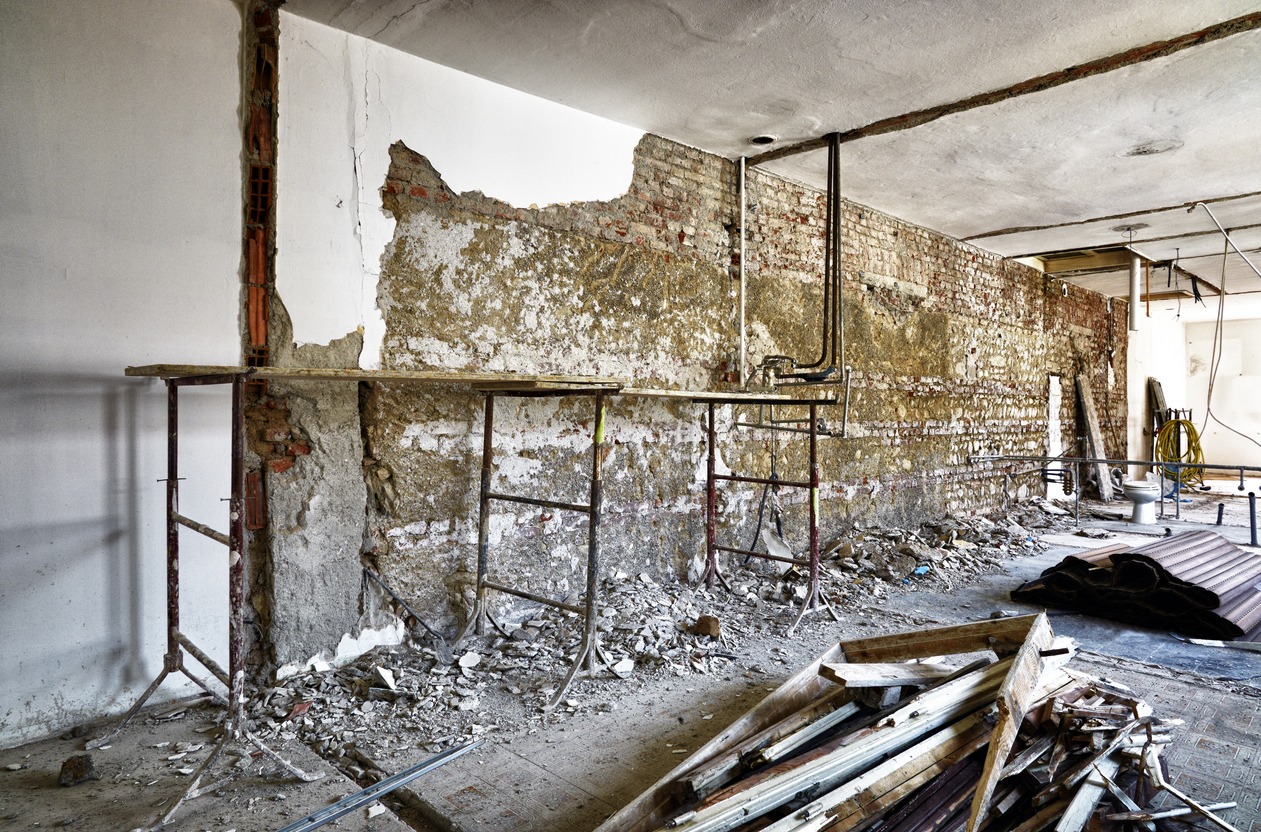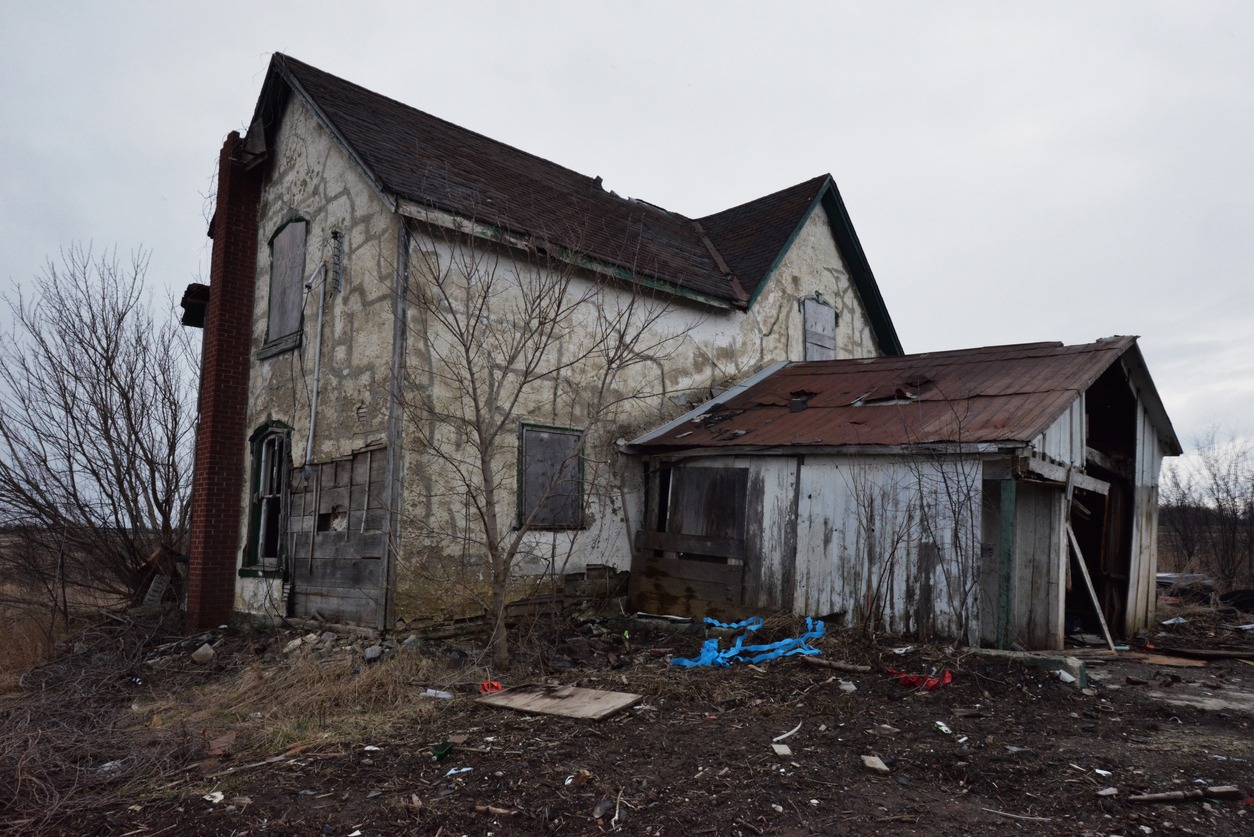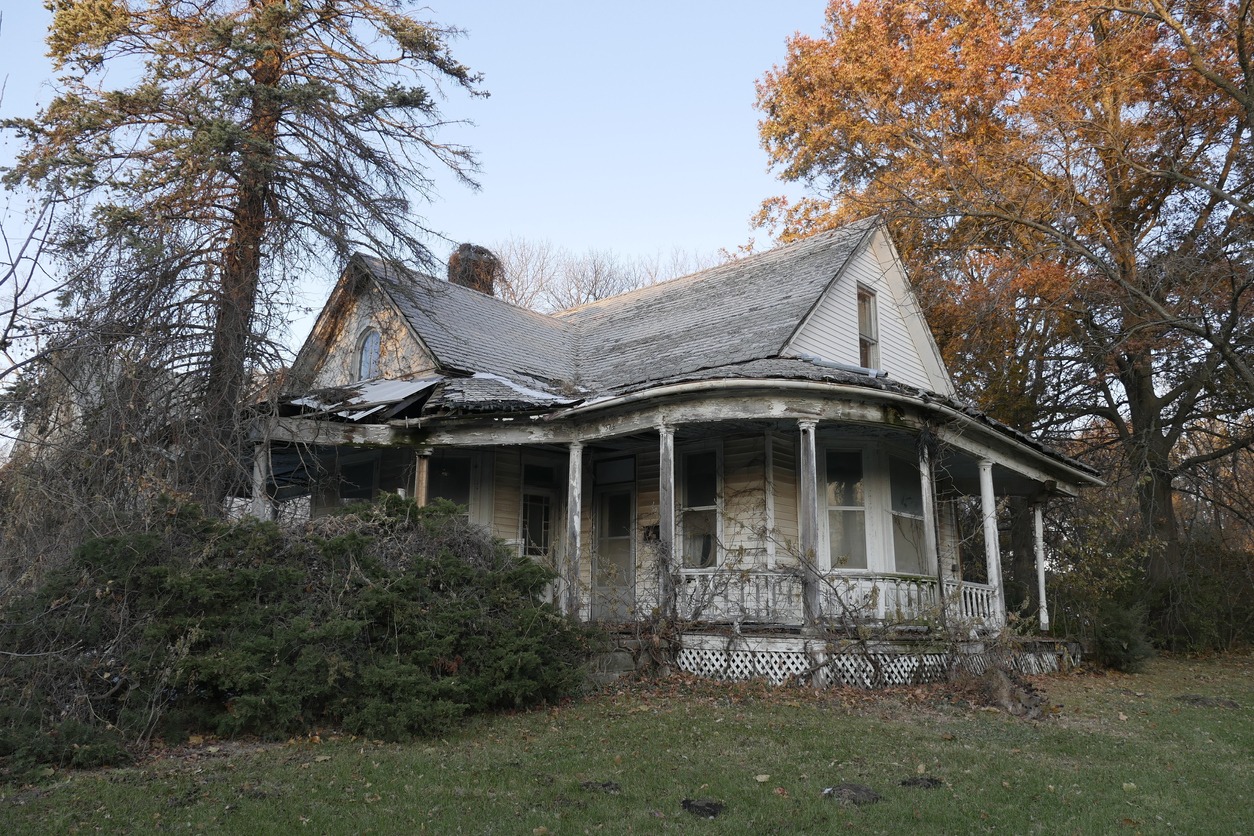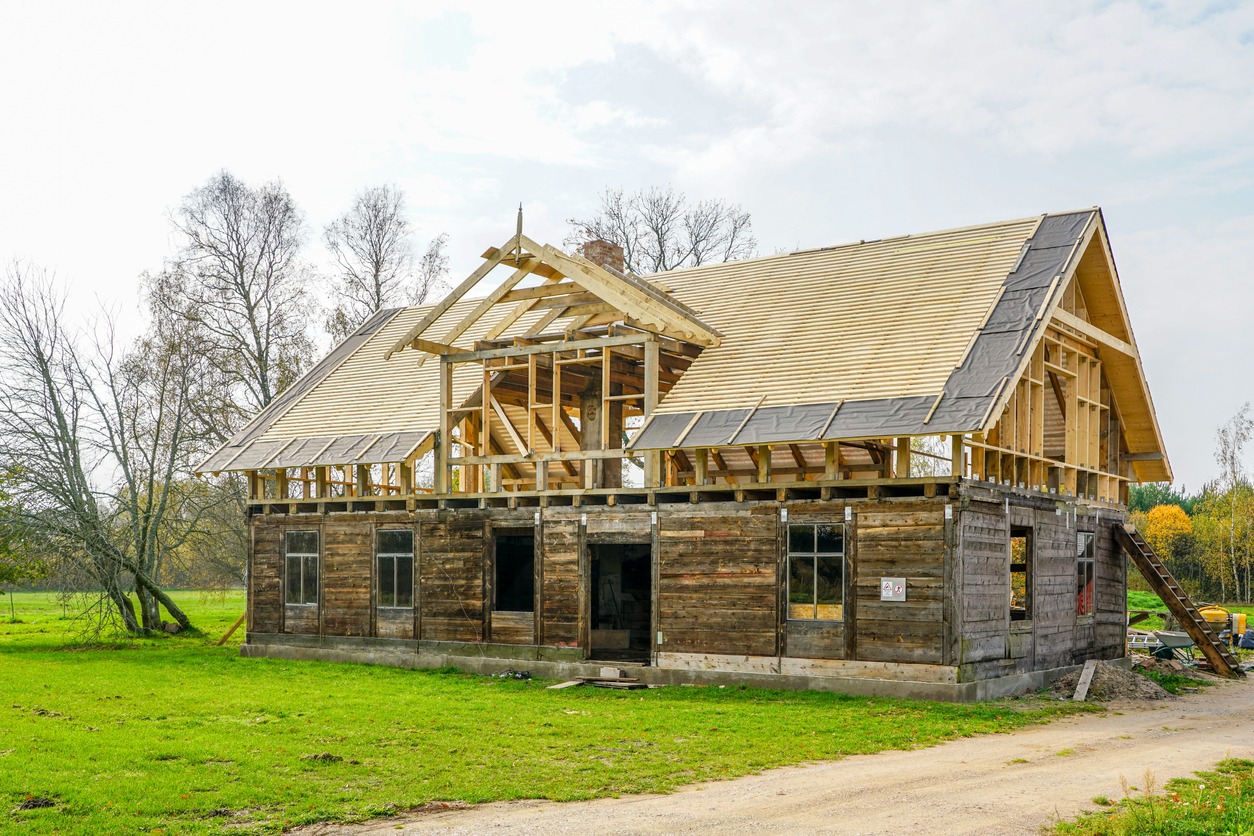Abandoned homes are everywhere, often overlooked and slowly deteriorating. Yet, these spaces hold incredible potential for transformation. With a growing emphasis on sustainability and creative reuse, the idea of turning these forgotten properties into personal dream homes is gaining traction. It’s not just about finding a place to live; it’s about taking something old and unused and breathing new life into it, making it your own.
In this article, we’ll guide you through the process of converting an abandoned house into a warm and inviting home. We’ll cover everything from the initial assessment and legal considerations to the actual renovation work and personal touches that make a house feel like home. This journey is about creating a space that reflects your identity and values, all while contributing to the revitalization of your community.
Recognizing Potential in Abandoned Properties
Finding the right abandoned property to transform can be a thrilling part of the journey toward creating your dream home. These properties, often overlooked, can become the canvas for your creativity and personal expression. Recognizing the potential in an abandoned home requires a mix of intuition, research, and practical assessment. It’s about seeing beyond the current state of neglect to envision what could be.
Finding Abandoned Properties
- Research local listings: Look for homes that have been on the market for a long time.
- Drive around neighborhoods: Identify areas with potential and look for homes that appear uninhabited.
- Check with local authorities: Sometimes, the city or county has a list of abandoned properties or can offer guidance.
Assessing Location
- Community and surroundings: Consider the neighborhood’s safety, amenities, and overall vibe.
- Proximity to essentials: Think about how close the property is to schools, grocery stores, public transportation, and other essentials.
- Future developments: Research any planned developments in the area that might affect your living experience or property value.
Evaluating Structural Integrity
- Hire a professional inspector: Before getting too attached, ensure the building is structurally sound.
- Look for major issues: Be on the lookout for significant problems like foundation cracks, roof damage, or signs of water damage.
- Consider renovation scope: Determine if the property’s condition matches your budget and ability to renovate.
Envisioning the Transformation
Visualize what each space could become with some care and creativity. Even rough sketches can help solidify your vision for the property. You should be prepared to adapt your plans as you learn more about the property’s limitations and potential.
Recognizing the potential in an abandoned property is the first step toward creating a home that’s uniquely yours. It involves looking beyond the surface to see the home’s hidden charm and possibilities, considering the practical aspects like location and structural integrity, and envisioning the transformation you can bring about. With the right property, a clear vision, and a commitment to the process, you can turn an abandoned space into a beautiful and personal living space.
Legal and Financial Considerations
Transforming an abandoned property into your dream home involves more than just renovation. It’s crucial to navigate the legal landscape and manage your finances effectively. Understanding ownership issues, estimating costs, and securing funding are foundational steps in ensuring your project’s success without unforeseen legal complications or budget overruns.
Navigating Ownership and Legal Issues
- Title search: Conduct a thorough title search to ensure there are no liens, unpaid taxes, or disputes over the property’s ownership.
- Legal assistance: Consider hiring a real estate attorney to help navigate any legal complexities related to acquiring an abandoned property.
- Zoning and permits: Check local zoning laws and obtain necessary permits before starting any work, as regulations can significantly impact your renovation plans.
Estimating Renovation Costs
Have the property inspected by professionals to identify necessary repairs and renovations, which will help in creating a realistic budget. Be aware of potential hidden costs such as mold removal, structural repairs, or outdated electrical systems that can significantly increase your budget. Always include a contingency fund in your budget, typically 10-20% of the total estimated costs, to cover unexpected expenses during the renovation process.
Budgeting and Financing
Based on the professional assessments and estimated costs, create a detailed budget that covers all aspects of the renovation, from materials to labor. Explore various financing options, including traditional mortgages, renovation loans, or government grants available for rehabilitating abandoned properties. Investigate if there are local or federal tax incentives, rebates, or grants for renovating abandoned properties, especially if you plan to incorporate energy-efficient features.
Planning for Long-Term Costs
Consider the long-term costs of maintaining a larger or older home, including potential increases in utility bills and ongoing maintenance. Ensure you have the right insurance coverage for a property under renovation, which may differ from standard homeowners’ insurance.
Legal and financial planning is critical when transforming an abandoned property into a dream home. By thoroughly understanding and addressing ownership and legal issues, accurately estimating and budgeting for renovation costs, and exploring all available financing options, you can lay a solid foundation for your project. This preparation not only helps in avoiding legal pitfalls and financial stress but also ensures that the renovation process is as smooth and enjoyable as possible.
Planning Your Renovation Project
Once you’ve navigated the legal and financial landscape, the next step in transforming an abandoned property into your dream home is detailed project planning. Effective planning involves setting clear goals, understanding the renovation process, and managing timelines and resources efficiently. This stage sets the direction for your entire renovation journey, helping to ensure that your project stays on track and reflects your vision.
Setting Realistic Goals
- Define your vision: Clearly outline what you want to achieve with the renovation, from restoring historical features to modernizing the space for contemporary living.
- Prioritize projects: Identify which renovations are must-haves and which are nice-to-haves. Start with structural and safety-related projects before moving on to aesthetic changes.
- Be realistic: Consider your budget, timeframe, and available resources when setting your goals. It’s important to be pragmatic about what can be achieved.
Understanding the Renovation Process
- Phased approach: Break down the renovation into manageable phases, such as demolition, structural repairs, systems (electrical, plumbing, HVAC), insulation, drywall, flooring, and finishes.
- Timeline planning: Develop a timeline for each phase of the project, including buffer time for unexpected delays. This helps in coordinating different tasks and managing contractors.
- Permitting and approvals: Ensure that all renovations comply with local building codes and regulations. Factor in the time required to obtain necessary permits and inspections into your timeline.
Designing Your Space
- Collaborate with professionals: Consider hiring an architect or interior designer to help translate your vision into detailed plans and ensure that the design meets both your aesthetic preferences and functional needs.
- Selecting materials and finishes: Choose materials and finishes that align with your style and budget. Consider durability, maintenance, and sustainability in your selections.
- Incorporate flexibility: Design spaces that can evolve with your needs, allowing for future modifications without extensive renovations.
Managing Resources
Vet and select reliable contractors, suppliers, and vendors. Look for those with good reviews, solid portfolios, and experience with similar projects. Plan for the timely procurement of materials to avoid delays. Keep an eye on sales and discounts to stretch your budget further. Make sure to establish clear communication channels with your contractors and vendors. Regular updates and check-ins can help in addressing issues promptly and keeping the project on track.
Planning your renovation project is a critical step in transforming an abandoned property into your dream home. By setting realistic goals, understanding the renovation process, thoughtfully designing your space, and effectively managing resources, you can create a detailed roadmap that guides every aspect of the renovation. This careful planning helps you not only achieve the desired outcome but also enjoy the journey of bringing your vision to life.
Interior Design and Personalization
After addressing the structural and functional aspects of your renovation, the next exhilarating phase is interior design and personalization. This stage is where your transformed space truly becomes your home, reflecting your personality, preferences, and lifestyle. It’s an opportunity to infuse each room with your unique identity, creating environments that inspire, comfort, and delight you and your family.
Creating a Cohesive Interior Design Plan
Decide on a central theme or style that resonates with you, whether it’s modern minimalism, rustic charm, industrial edge, or a blend of influences. Choose a color palette that complements your chosen theme, sets the desired mood, and flows well from room to room, creating a sense of cohesion throughout the home. Plan your spaces with both aesthetics and function in mind. Consider how you’ll use each room and arrange furniture and features to facilitate flow and usability.
Choosing Themes, Colors, and Décor
Incorporate elements that tell your story, such as family heirlooms, artwork, or collections that hold special meaning to you. Use a variety of textures and patterns to add depth and interest to your spaces. Mix metals, wood, textiles, and other materials to enhance the sensory experience of your home. Invest in lighting that enhances the ambiance of each room. Include a mix of overhead, task, and accent lighting to create versatile and inviting environments.
Innovative Ideas for Personalizing Reclaimed Spaces
- Repurpose with purpose: Look for creative ways to repurpose original features of the home, such as turning an old fireplace into a bookshelf or an architectural salvage piece into a statement light fixture.
- DIY projects: Embrace DIY projects that add a personal touch and uniqueness to your home, like custom shelving, hand-painted murals, or refurbished furniture.
- Smart technology: Integrate smart home technology in a way that enhances your lifestyle, from automated lighting and heating systems to advanced security features and entertainment setups.
Balancing Trends and Timelessness
While it’s tempting to follow the latest interior design trends, focus on what genuinely appeals to you and will stand the test of time in your personal space. Design rooms that can easily be updated with small changes, like swapping out decor items, curtains, or accent walls, to refresh the look without major overhauls.
Interior design and personalization are what transform a renovated property into a home that’s distinctly yours. This phase allows you to express your creativity and individuality, turning each room into a reflection of your personality and a space where you feel truly at home. By carefully selecting themes, colors, and décor and incorporating personal and innovative touches, you create an environment that not only looks beautiful but also resonates with personal significance and warmth.
Overcoming Challenges
Renovating an abandoned property and transforming it into your dream home is a rewarding journey, but it’s not without its challenges. From unexpected structural issues to budget constraints and project delays, various obstacles can arise. Overcoming these challenges requires resilience, flexibility, and a problem-solving mindset. This section explores strategies to navigate and surmount common renovation hurdles, ensuring your project stays on course toward creating your ideal living space.
Dealing with Unexpected Issues
When unexpected problems emerge, take a step back to assess the situation calmly before reacting. Bring in professionals to evaluate issues like structural damage, mold, or outdated systems to understand the extent and solutions. Be prepared to revise your renovation plans, budget, and timeline based on expert advice and the challenges encountered.
Staying Motivated Amidst Setbacks
Focus on the progress made, no matter how small, to maintain motivation and perspective. Keep your final vision in mind, and remind yourself why you started this project to stay driven during tough times. Lean on friends, family, or online communities for encouragement, advice, and moral support when challenges seem overwhelming.
Flexibility in Planning and Execution
Understand that renovation projects, especially in abandoned properties, can be unpredictable. Being mentally prepared for changes can make adapting easier. Have backup plans for critical aspects of your renovation, such as alternative material choices or temporary housing arrangements if needed. Maintain clear and frequent communication with your contractors and team, ensuring everyone is aligned on changes and adjustments.
Learning from the Process
Keep a record of the challenges you faced and how you overcame them, which can serve as valuable learning for future projects or to help others. Every challenge presents an opportunity to learn and grow, not just about renovation but also about problem-solving and resilience.
Overcoming challenges in the renovation of an abandoned property is an integral part of the journey. By approaching obstacles with a calm, informed, and flexible mindset, celebrating progress, and staying focused on your vision, you can navigate through difficulties and continue moving toward your goal of transforming the space into your dream home. Remember, the most challenging projects often lead to the most rewarding outcomes, making all the effort and perseverance worthwhile.
Conclusion
Transforming an abandoned home into your dream space is a journey filled with challenges, learning, and immense satisfaction. By carefully planning, staying flexible, and creatively overcoming obstacles, you can turn a neglected property into a personalized and cherished home. Remember, each step forward, no matter how small, brings you closer to realizing your vision. Stay motivated, seek support when needed, and enjoy the process of creating a space that truly reflects you. Your dream home awaits at the end of this rewarding journey.





